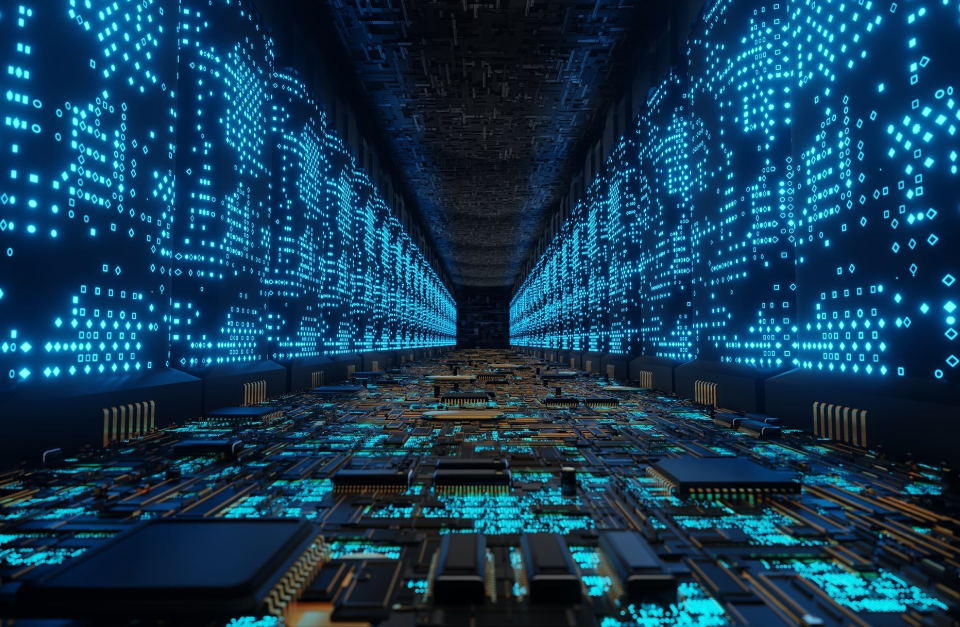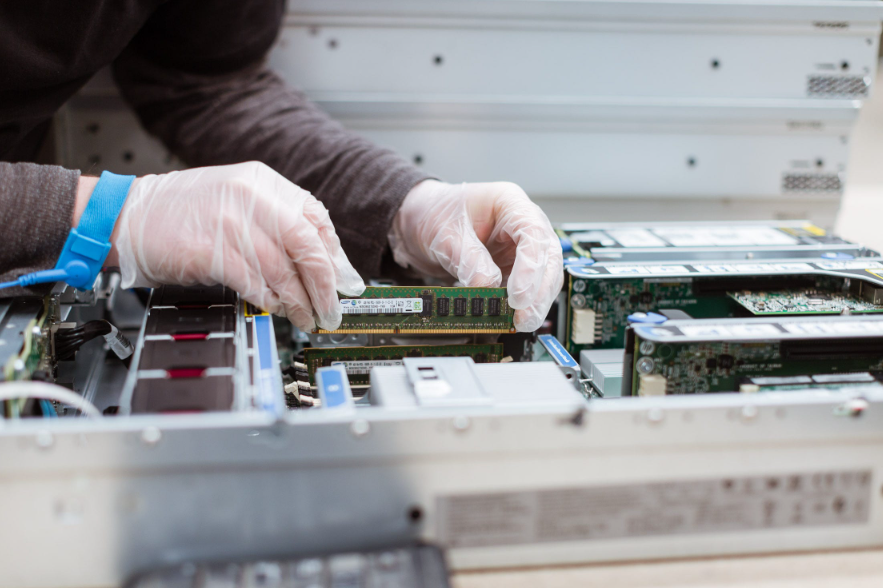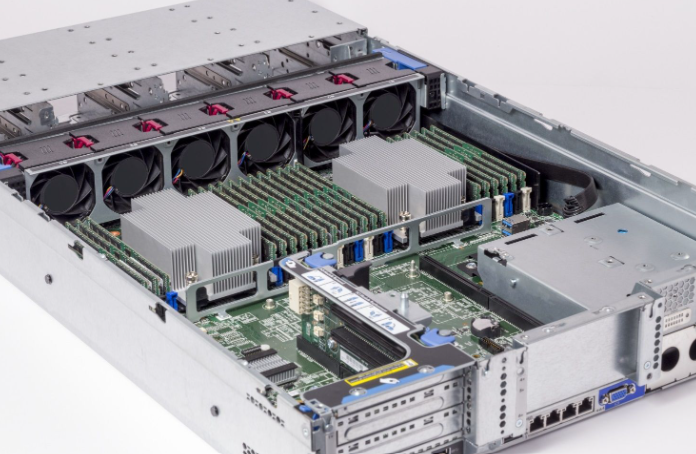When it comes to understanding how a server functions, it’s crucial to delve into the hardware components that make up its core. These components work together seamlessly to ensure that the server operates efficiently and reliably. In this blog post, we will take a comprehensive look at the key server components that play a vital role in its performance and functionality.
The Central Processing Unit (CPU): The Brain of the Server
Central to every server’s operation is its Central Processing Unit, or CPU, which functions as the server’s intellectual center. This pivotal component is tasked with executing program instructions, performing complex calculations, and processing data. Its capability to manage these tasks efficiently is a determining factor in the server’s overall speed and operational efficiency.
The CPU’s architecture—how it’s designed and its core count—plays a significant role in how well it can handle simultaneous processes, affecting the server’s ability to run multiple applications at once without lag. The performance of a server’s CPU is often measured in terms of its clock speed, which is gauged in gigahertz (GHz). This measurement shows the speed at which the CPU can handle directions, with higher qualities relating to quicker handling speeds.
Also, present-day servers might utilize multi-core CPUs, which contain at least two free cores, considering equal handling of guidelines. This performing various tasks capacity is significant for popularity conditions where servers need to execute a few undertakings simultaneously without execution corruption. In synopsis, the computer processor is an imperative server part whose determinations and capacities straightforwardly impact the machine’s computational power and responsiveness to requests.
Random Access Memory (RAM): The Server’s Short-term Memory
Random Access Memory, commonly known as RAM, plays a pivotal role in a server’s performance by temporarily storing data that the CPU is actively using or processing. This dynamic component is essentially the workspace the server leverages to access and manipulate data quickly. The greater the RAM capacity a server has, the more information it can hold in this ‘short-term memory,’ which directly translates to the server’s ability to manage a larger number of tasks or processes at the same time. This enhanced multitasking capability can significantly speed up response times to user requests, as the CPU can retrieve data from RAM much faster than from storage drives.
RAM is accessible in different sizes, regularly estimated in gigabytes (GB) or terabytes (TB) for additional strong servers, and its speed is likewise an urgent variable influenced by large server performance. Faster RAM can improve the rate at which data is read from and written to this temporary storage, thereby accelerating the processing times for applications running on the server.
Choosing the perfect sum and sort of RAM is significant for servers entrusted with handling data-intensive operations or running numerous applications at the same time, as it guarantees smooth, proficient handling without bottlenecks. This part’s adaptability and upgradeability are additionally key contemplations for future-proofing server foundations, considering changes in light of developing responsibility requests.
Storage Drives: The Long-term Memory
Storage drives serve as the backbone for data retention in a server, effectively acting as its long-term memory where information is stored even when the server is powered down. Two primary types of drives dominate server architecture: Hard Disk Drives (HDDs) and Solid State Drives (SSDs). HDDs, known for their immense storage limits, use attractive capacity to house data, making them a practical answer for servers that require a lot of data storage. Then again, SSDs utilize streak memory to accomplish faster information access times, upgrading the server’s exhibition, particularly in assignments that request quick data recovery.
The choice between HDDs and SSDs often hinges on the specific requirements of the server’s intended tasks. For applications where speed takes precedence over storage size, SSDs are preferred for their efficiency and reliability, as they lack moving parts, reducing the risk of mechanical failures. Conversely, when storage capacity is paramount, HDDs remain an attractive option due to their affordability and availability in higher capacities.
Coordinating these storage arrangements as per the server’s functional requests can emphatically impact its productivity and ability to take care of data-intensive errands. Moreover, headways in innovation have presented hybrid systems that join the best elements of both HDDs and SSDs, offering a decent way to deal with capacity that boosts execution while keeping up with adequate space for information.
Motherboard: The Heart of Server Operations
The motherboard goes about as the fundamental stage that organizes the communication and integration of all basic server parts. It is intended to oblige the particular necessities of the server’s central processor, RAM, storage drives, and expansion cards, guaranteeing that these components work as one. Key to its usefulness is the format and plan, which decides the similarity with different kinds of processors and memory modules, as well as the number and sort of spaces accessible for fringe and extension cards.
The motherboard likewise houses the server’s BIOS or firmware, which oversees equipment introduction during the boot-up process and offers help for various operating systems. It is furnished with different connectors and ports that take into account outer gadgets/devices and points of interaction to be associated, subsequently extending the server’s abilities and functionalities. Quality and dependability are central when choosing a motherboard, as they straightforwardly influence the server’s presentation, extension prospects, and in general system stability. Through its complicated plan and complex associations, the motherboard remains at the center of server activities, working with consistent cooperation among the server’s parts and guaranteeing the smooth execution of assignments.
Power Supply Unit (PSU): Fueling the Server
The Power Supply Unit (PSU) assumes a fundamental part in the usefulness of a server by changing electrical power from an outlet into a usable structure for the PC’s interior components. It’s a critical bridge that ensures the smooth activity of all equipment by conveying steady and constant power. A server’s PSU must be reliable and capable of handling the energy demands of the system to avoid service disruptions or potential hardware damage due to power fluctuations.
In choosing the right PSU, one must consider the total power consumption of the server’s components, such as the CPU, RAM, storage drives, and any additional peripherals. This estimation assists in choosing a PSU with a suitable wattage rating that surpasses the waiter’s most extreme power prerequisite, consequently giving a cradle to oblige future redesigns or expanded load without requiring a power supply substitution.
Besides, proficiency is a vital figure in choosing a PSU. High-productivity units squander less power as intensity, prompting lower working expenses and a diminished requirement for cooling. Numerous PSUs accompany productivity evaluations, like 80 Or more certifications, demonstrating their capacity to keep up with high proficiency across different loads. This element saves energy as well as adds to the life span of the server by guaranteeing parts are not presented to over-the-top intensity because of power failure. In total, the PSU is a central part that guarantees the server has the vital ability to play out its undertakings while improving energy use and limiting heat production.
Cooling System: Keeping Temperatures in Check
A vital aspect of server management, the cooling system, is tasked with dissipating the heat produced during the server’s operation to prevent thermal overload and ensure components work within their optimal temperature ranges. Heat is an inevitable byproduct of electronic devices, and servers, given their high-performance nature, are no exception. Compelling cooling not only delays the life of the server parts but also keeps up with the effectiveness and dependability of the server system. This system frequently utilizes a blend of inactive and dynamic cooling instruments. Latent cooling incorporates heatsinks that retain heat from parts like the CPU and scatter it.
Active cooling, on the other hand, involves fans or liquid cooling solutions that actively remove heat from the server environment. High-level server arrangements might utilize more complex cooling procedures, for example, liquid cooling systems, which offer better heat and intensity scattering looked at than air cooling, particularly in thickly stuffed data centers or in circumstances where server loads are reliably high. The choice of cooling solution can significantly impact the server’s performance and operational costs, making it a critical consideration in server design and maintenance.
Network Interface Cards (NICs): Connecting the Server to the World
Network Interface Cards (NICs) are significant for a server’s availability, going about as the bridge between the server and the more extensive organization. They work with information transmission to and from the server, empowering it to collaborate with different PCs, servers, and online assets. Depending on the server’s specific needs and the network’s infrastructure, NICs can support various protocols like Ethernet, which is common for wired connections, Wi-Fi for wireless communications, and fiber optic for high-speed data transfer.
The choice of NIC affects the server’s access speed to the network and, by extension, its ability to quickly process requests and exchange data. For servers handling high volumes of traffic or those requiring robust, secure connections, selecting the appropriate NIC with the right speed and compatibility is essential for optimal performance and reliability.


